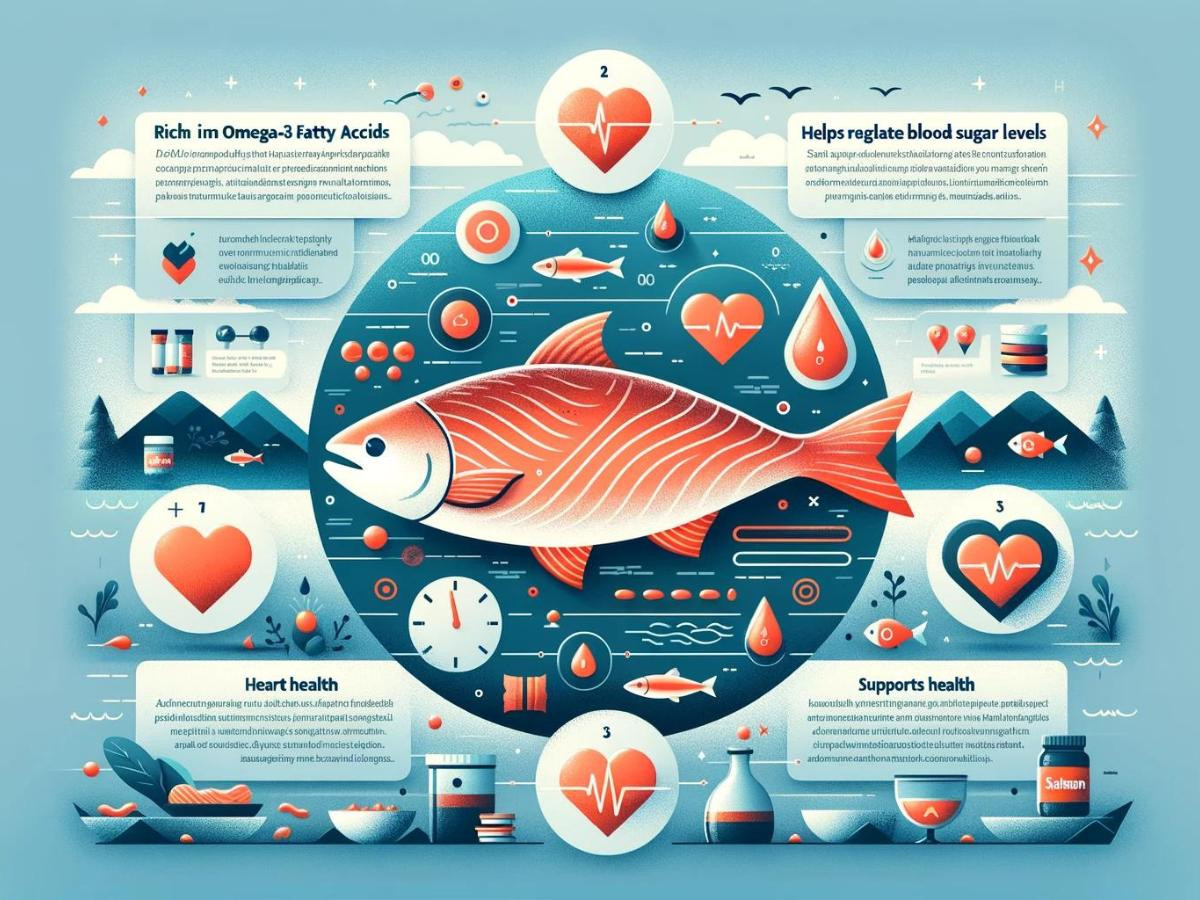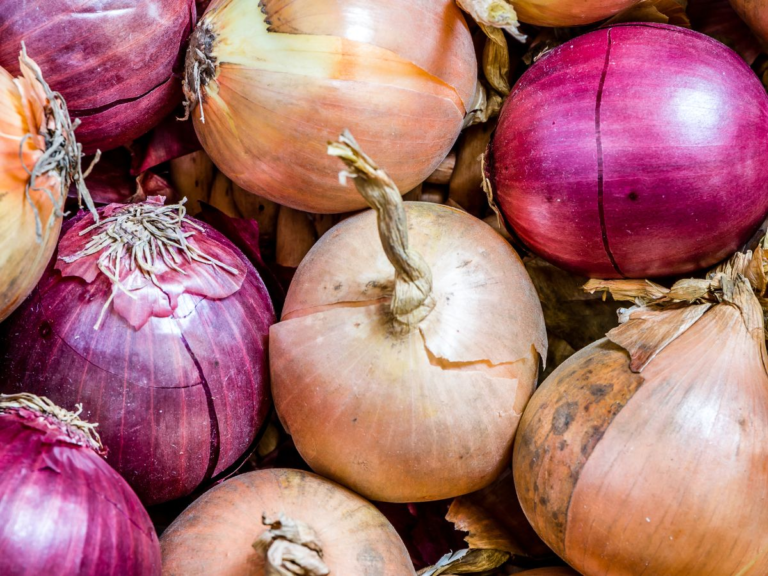Eating Salmon With Diabetes: How Fatty Fish Can Help Blood Sugar Levels
If you’ve ever wondered whether that delicious slice of salmon on your plate is just tasty or a boon for your health, especially if you or someone close to you is managing diabetes, you’ve docked at the right port. It’s hard enough as it is trying to find your way through the tricky path of the diabetic diet. Hidden sugars and carbohydrates are lurking in the darkest of corners. With specific seafood tasting so sweet and delicious, it’s hard not to wonder, “Is salmon good for diabetes?”. The Answer can be found just below sea level. Here is where you will find the freshest catch on all the facts and myths behind having diabetes and trying to enjoy some salmon.

Your Friendly Diabetic Seafood Guide
Now, I’m not just a chef who loves to play with flavors; I’m also someone who deeply cares about the health and nutrition of my family. Having a father and grandmother with diabetes has made me more conscious of the food we put on our table, especially when it comes to managing blood sugar levels.
Now, living out east on Long Island, surrounded by the sea’s bounty, I’ve had the privilege of working with some of the freshest seafood available. But it’s not just about the taste; it’s about how these ocean treasures, especially salmon, play a crucial role in a balanced, diabetes-friendly diet.
From the rush of catching my own fish to experimenting with zesty, herb-infused salmon dishes that my two little sous-chefs at home (my daughters) absolutely adore, fish consumption has been a central part of our kitchen—and our health.
Why salmon, you ask? Aside from its mouthwatering taste, salmon is a powerhouse of nutrients that can be a game-changer for anyone, especially those navigating the complexities of diabetes.
How does it stack up against the needs of a diabetic diet? And can it make a difference in managing blood sugar? So, let’s cut to the chase and dive into the sea of information about salmon and diabetes.
Table of Contents
Is Salmon Good For Diabetes?

Pull up a chair as we explore why salmon isn’t just good for the soul but also for controlling blood sugar and keeping those heartbeats dancing to a healthy fat rhythm. And because I can’t let you leave without a little something to try in your own kitchen and add to your healthy diet, I’ll share a simple yet utterly delicious salmon recipe that’s become a favorite in my family.
The Role of Seafood in a Diabetes-Friendly Diet

Seafood has a pivotal role as a key player that can make a real difference in controlling blood glucose levels. Why, you ask? Let’s break it down.
Seafood, particularly fatty fish like salmon, mackerel, and grilling fresh sardines, is like the superhero of a diabetes-friendly diet. These high-protein fish are packed with omega-3 fatty acids, which sound fancy but are essentially good healthy fats that our bodies cheer for. Unlike the villainous saturated fats found in red meat, omega-3s are heart-healthy and don’t come with a cape, but they might as well, given their health benefits.
Here’s the catch of the day:
Omega-3 Fatty Acids: These are champions at reducing inflammation throughout the body and lowering the risk of heart disease. When diabetics eat seafood, it’s a big win because it helps tackle two birds with one stone—managing blood sugar levels, keeping their cardiovascular health peaking, and a happy heart ticking happily.
High-Quality Protein: Eating fish provides high-quality protein, like a slow-burning log on a fire. It keeps you full longer and ensures your blood sugar levels don’t go on a roller coaster ride.
Vitamins and Minerals: Fatty fish contain vitamins D and B2 (riboflavin), calcium, phosphorus, iron, zinc, iodine, magnesium, and potassium. It’s like eating a treasure chest of nutrients that support overall health, not just blood sugar management.
Why Salmon Stands Out: Fatty Acids & Saturated Fat

Among the sea’s bounty, salmon is a standout star, and not just for its rich, buttery flavor that makes food enthusiasts swoon. When it comes to managing diabetes, this fish is a powerhouse.
Cooked salmon is teeming with omega-3 fatty acids. These aren’t just any fats; they’re the kind that make your heart do a happy dance. Omega-3s are known for their anti-inflammatory properties, crucial for individuals with diabetes since inflammation is a frequent sidekick of this condition.
These fatty acids also play a critical role in heart health, reducing the risk of heart disease—a more prominent concern for those with diabetes.
But wait, there’s more:
High-Quality Protein: Eating Salmon is an excellent source of high-quality protein. This is essential for blood sugar control because it helps slow digestion, prevent blood sugar spikes, and keep you feeling full and satisfied longer. It’s like having a steady hand guiding your blood sugar levels, keeping things smooth and steady.
Rich in Vitamins and Minerals: Packed with Vitamin D, B vitamins, and selenium, salmon is like a multivitamin in fish form. Vitamin D, in particular, is a superstar for diabetes management, playing a role in insulin sensitivity and glucose metabolism.
Low in Mercury: Salmon has a lower risk of mercury contamination than other fish. This means you can enjoy it regularly without worrying about the potential health risks of high mercury levels.
Incorporating salmon into your diet isn’t just a treat for your taste buds; it’s a boon for your health. Whether grilled, baked, or poached, however you cook salmon offers versatility in preparation that can suit any palate, making it an easy addition to your dietary repertoire.
Choosing the Right Salmon

Picking the right salmon can be like selecting the perfect wine—it’s all about quality, source, and preference. But when your health is on the line, especially with diabetes in the mix, this choice becomes even more crucial.
Wild vs. Farmed Salmon

The debate between wild and farmed salmon is ongoing, but wild salmon often takes the lead when it comes to health. Wild salmon, swimming freely in its natural environment, tends to have a higher concentration of omega-3 fatty acids and is less likely to be exposed to contaminants like PCBs (polychlorinated biphenyls) than its farmed counterparts. However, farmed salmon is not off the table; it’s about finding responsibly farmed options that maintain high health and environmental standards.
Sustainability Matters

Opting for salmon that’s not only good for you but also good for the planet is a win-win. Look for certifications like the Marine Stewardship Council (MSC) for wild salmon and the Aquaculture Stewardship Council (ASC) for farmed salmon. These labels assure you that the salmon you’re buying is sourced from suppliers prioritizing sustainable fishing practices.
Freshness is Key

Whether you’re shopping at a local fish market in New York or your neighborhood grocery store, the freshness of salmon is paramount. Fresh salmon should have a clean, ocean-like scent, vibrant flesh, and moist, shiny skin. If it smells fishy, looks dull, or feels slimy, it’s best to pass.
Location, Location, Location

Take advantage of local seafood markets where fresh, high-quality salmon is more likely to be found. Local doesn’t always mean better, but it often means fresher, and freshness can significantly impact the fish’s flavor and nutritional value.
Choosing the right salmon is about more than just taste; it’s about making informed decisions that benefit your health, the environment, and the culinary experience. So, next time you find yourself staring at a sea of salmon options, remember these tips to navigate your way to the best choice for your health and your plate.
A Simple, Diabetes-Friendly Salmon Recipe

Now, let’s get to the fun part—the cooking! As an executive chef with a penchant for health and nutrition, I’m always on the hunt for recipes that are delicious and beneficial for health, especially for those managing diabetes.
Here’s a simple, diabetes-friendly salmon recipe that’s as easy to prepare as it is flavorful. It’s perfect for a nutritious weeknight dinner and sophisticated enough to impress guests at your next gathering.
Lemon-Herb Grilled Salmon
Ingredients
4 salmon fillets (about 6 ounces each)
2 tablespoons olive oil
1 tablespoon fresh lemon juice
1 teaspoon fresh dill, chopped
1 teaspoon fresh parsley, chopped
Salt and pepper to taste (use sparingly)
Instructions
Prep Your Grill: Preheat your grill to medium-high heat. If you’re using a grill pan indoors, get it hot enough that water droplets sizzle and evaporate on contact.
Season the Salmon: In a small bowl, whisk together olive oil, lemon juice, dill, parsley, and a pinch of salt and pepper. Brush this mixture over both sides of the salmon fillets, ensuring they’re well-coated.
Grill to Perfection: Place the salmon on the grill, skin side down, and let it cook undisturbed for about 6-8 minutes, depending on the thickness. You’re aiming for the salmon to be just opaque in the center. If you prefer a well-done piece, give it another minute or two.
Serve and Enjoy: Transfer the salmon fillets to plates once cooked to your liking. A quick tip: If you’re struggling with the skin sticking to the grill, don’t fret. Let it cook a bit longer; it usually releases more easily once it’s done. Serve your salmon with grilled vegetables or a fresh salad for a complete, diabetes-friendly meal.
Conclusion

With its rich omega-3 fatty acid content, high-quality protein, and essential vitamins and minerals, Salmon emerges not just as a wise choice but as a delicious strategy for managing your blood sugar level and enhancing overall health.
Remember, the choice of salmon—wild over farmed, fresh over frozen, sustainable over questionable—can significantly influence the environmental impact and the nutritional benefits you reel in.
As someone who’s navigated the complexities of cooking and nutrition, professionally and personally, I can attest to the transformative power of incorporating fresh, quality ingredients into your diet. It’s not merely about controlling diabetes; it’s about elevating your health and your culinary experiences.
Managing diabetes or any health condition shouldn’t be a bland affair. With the right ingredients and a bit of culinary curiosity, every meal can celebrate flavor and well-being.
FAQ & Additional Information
Is fish or chicken better for diabetes?

Both fish and chicken can be excellent choices for managing diabetes. Still, fish, especially fatty types like salmon, mackerel, and sardines, may have a slight edge due to its omega-3 fatty acid content.
Omega-3s can help reduce inflammation and improve heart health, which is particularly beneficial for individuals with diabetes. Chicken is also a good option as it’s a lean source of protein that can help maintain stable sugar levels. However, it’s lower in omega-3 fatty acids.
The key is to prepare both in healthy ways, avoiding frying or heavy sauces that can add unwanted sugars or fats. Ultimately, incorporating a variety of fish and chicken into your diet can provide a range of nutrients beneficial for diabetes management.
Can diabetics eat too much fish?
Yes, diabetics can eat too much fish, especially if it’s high in mercury (like swordfish, king mackerel, and tilefish) or prepared with unhealthy methods (fried or coated in rich sauces). While eating fish is generally an excellent choice for its omega-3 fatty acids and lean protein, which support heart health and sugar control, moderation is key—consuming a variety of fish types and limiting high-mercury fish to no more than once a week is recommended to avoid potential health risks to blood vessel walls.
Aim for a balanced diet that includes a mix of seafood, lean meats, vegetables, fruits, and whole grains to manage diabetes effectively.
Can diabetics eat fish everyday?

Yes, diabetics can eat fish daily, provided it’s low in mercury and prepared healthy (e.g., baked, grilled, or steamed rather than fried). Fish, especially fatty types like salmon, mackerel, and sardines, are rich in omega-3 fatty acids, which are beneficial for heart health and may help manage sugar levels. However, variety is crucial to ensure a balanced intake of nutrients and to minimize exposure to contaminants like mercury found in certain fish. It’s recommended to vary the types of fish consumed and to include other protein sources in the diet to maintain overall health and nutritional balance.







